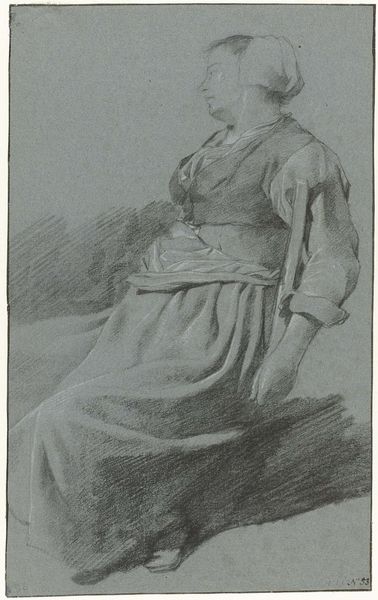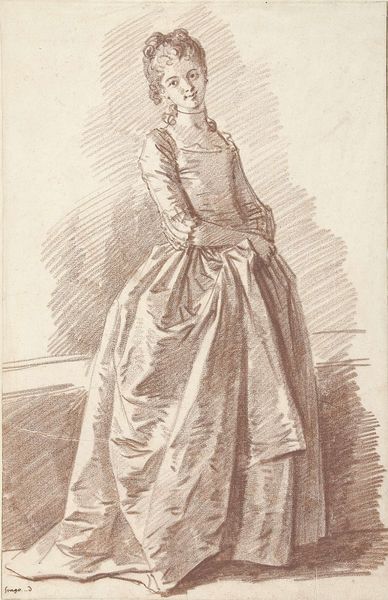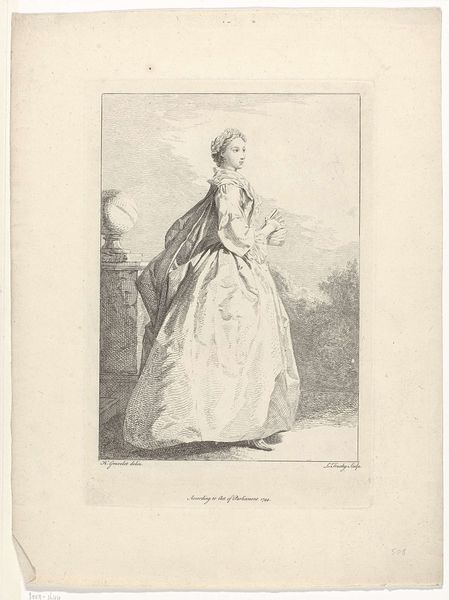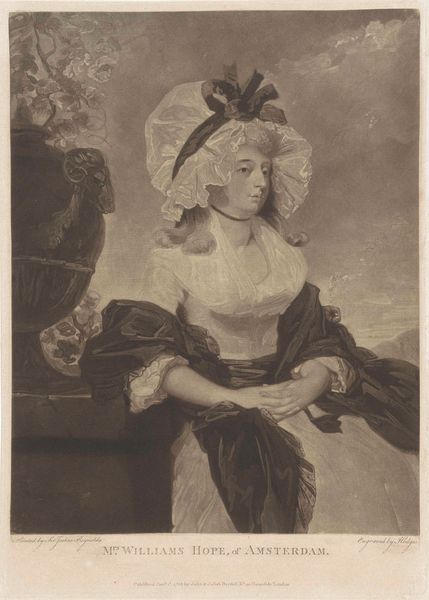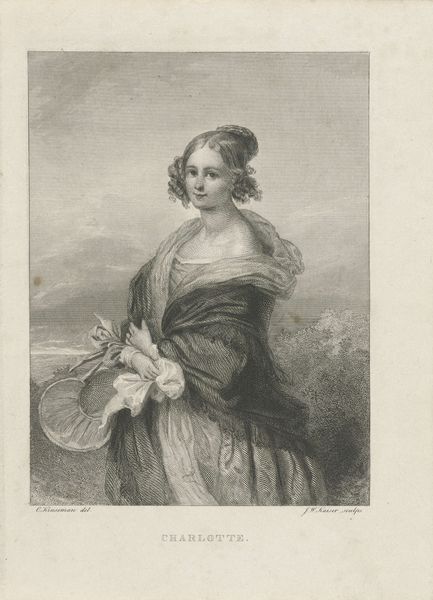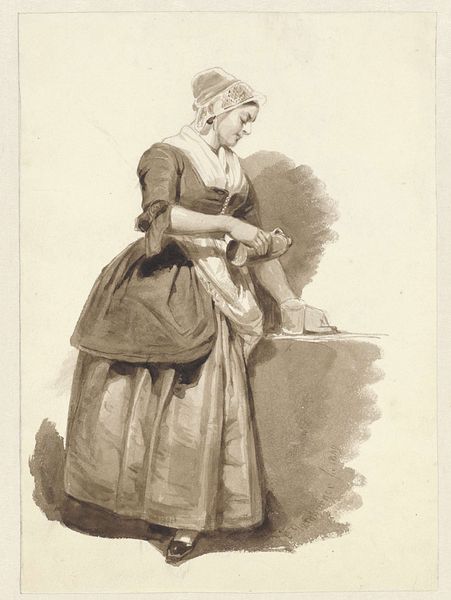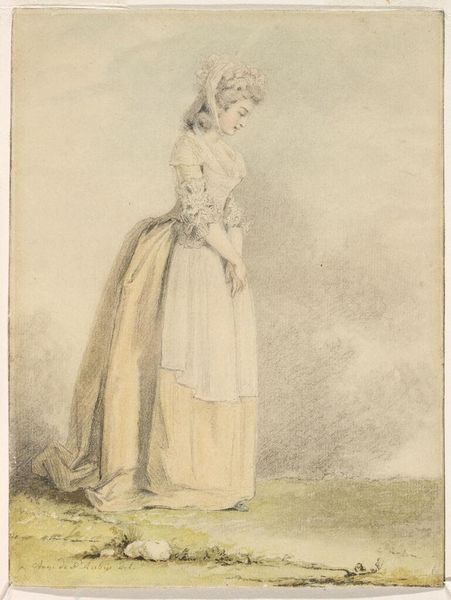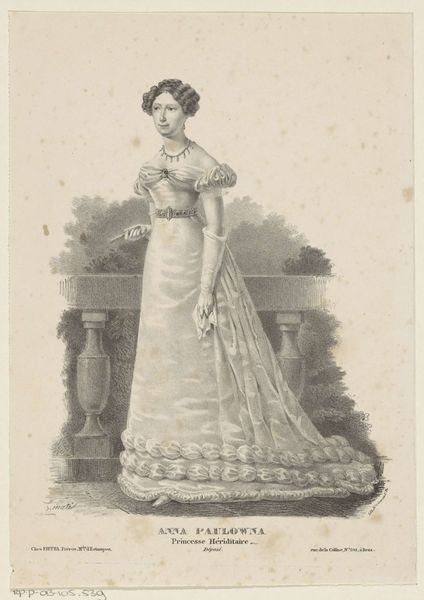
drawing, pencil
#
portrait
#
drawing
#
landscape
#
charcoal drawing
#
figuration
#
pencil drawing
#
romanticism
#
pencil
#
portrait drawing
Dimensions: height 442 mm, width 278 mm
Copyright: Rijks Museum: Open Domain
Curator: We're looking at a pencil and charcoal drawing by Taco Scheltema, titled "Jonge vrouw, op de rug gezien, staand in een tuin," dating roughly between 1770 and 1837. Editor: It has such a quiet mood, doesn't it? A woman in a long dress, observed from behind in a hazy outdoor space. The way the lines soften into shades really gives the impression of a distant, wistful memory. Curator: It certainly evokes a particular type of Romantic sentiment, aligning with the period’s focus on individual emotion and nature. The composition places the woman within the landscape, common in art concerned with the relationship between humanity and the natural world. It asks us to ponder on her position in society. Editor: What I find fascinating is the directness of the medium. The marks from the pencil and charcoal are quite visible, like a glimpse into the very hand that rendered it. The economy of line communicates the fall of fabric, and the soft definition of the body itself. You get the impression of it being produced rather efficiently too, perhaps a quick exercise. Curator: The choice of drawing underscores the artistic training of the time. Sketching from life, focusing on accurate rendering of form, light, and shadow, was an integral component of academic art. You can almost see Scheltema applying those principles to capture a contemporary fashionable figure. Editor: It's not just technical exercise though, is it? Pencil wasn't a cheaper way to make art in the 1770s, like people might assume, rather graphite came from specific locations like Cumbria in the UK and then had a cost assigned for its access. Someone made it, sold it, distributed it and then someone bought it. It also shows how Scheltema approached her labor, making a piece with specific intention to deliver. Curator: Indeed, and the portrait form has complex social roots as well, being connected to identity and class, both functioning inside portraiture’s display culture. That is even though it displays someone “op de rug gezien”. Even this can denote, show identity, without the usual facial route. Editor: It is a beautiful image for showing us ways materials inform artistry. Curator: I agree. Considering the time it was produced in really gives context to the way we think of both romanticism and representation.
Comments
No comments
Be the first to comment and join the conversation on the ultimate creative platform.
